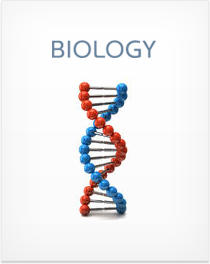Genetics and the Cell Cycle
This section covers the following topics
- The cell cycle
- Mitosis
- Meiosis
- Mendelian genetics
- Linked genes, sex-linked genes and non-Mendelian genetics
Section Summary
The cell cycle is a process whereby cells grow, develop and ultimately divide. G1, S and G2 are collectively called interphase, which ends with mitosis.
Division by mitosis yields two genetically identical daughter cells. Meiosis, on the other hand, converts a diploid cell into four haploid gametes. In humans, gametes are sperm and eggs. Crossing over during meiosis introduces genetic diversity and increases the fitness of the species as a whole.
Many inheritance patterns can be explained using simple Mendelian genetics. Each trait is controlled by two alleles, which can be either dominant or recessive. Organisms with two identical alleles are homozygous, while heterozygotes have different alleles. A structure called a Punnett Square is used to find the possible genotypes of offspring from a given cross, as well as the probability of each outcome. Mendel’s Law of Dominance holds that dominant alleles mask the presence of recessive alleles. The Laws of Segregation and Independent Assortment are demonstrated by the events of meiosis.
Moving beyond Mendelian genetics, some situations involve multiple alleles, epitasis or codominance. Sometimes genes are linked, or present on the same chromosome. The recombination frequency or the probability that the alleles will be separated by crossing over is referred to as map distance. Sex-linked genes do not have an allele on the Y chromosome.
The Cell Cycle
Overview
Cells reproduce by dividing, which creates two identical copies of the original cell.
Regular cellular division is called mitosis, which we’ll explain in a minute. Cellular reproduction requires significant amounts of energy, which prevents a cell from... Sign up to continue reading Genetics and the Cell Cycle >
